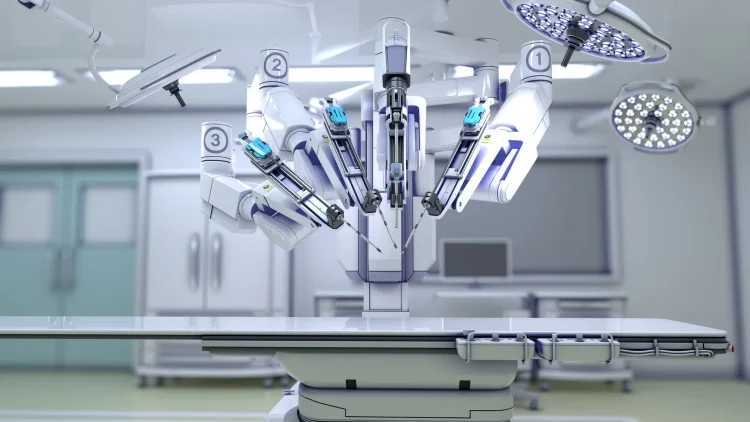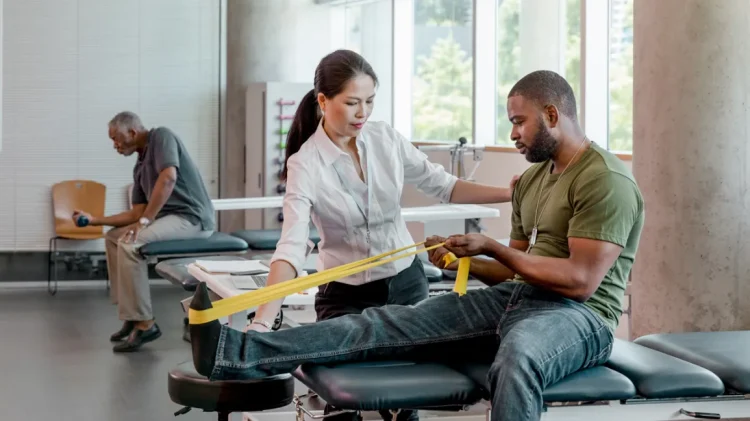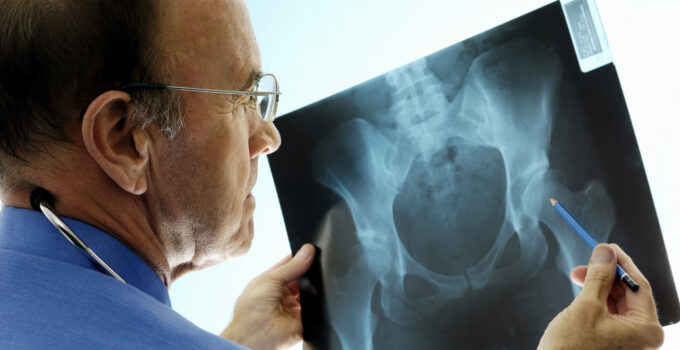Page Contents
Robotic Surgery
Robotics – Robotics have grown over the years and are being used increasingly in medicine for surgery. A robotics system helps the surgeon perform complicated procedures without having to do them manually. Using robot-assisted surgery, surgeons use surgical instruments that are controlled remotely by computers. There are different types of robots. One type is teleoperated, which means that the surgeon controls the movements of the robotic arm using devices attached to his body. Another type uses endoscopic cameras to guide the movement of the arm.
Computer-Assisted Navigation – Another advancement in orthopedics is computer-assisted navigation. Navigating in real time requires the best possible information about the patient’s anatomy. Computer-assisted navigation aids in providing accurate and detailed images to physicians on their screens. These images are used to plan surgeries before they happen.

Source: floridatoday.com
Magnetic Resonance Imaging (MRI) – The use of MRI technology in orthopedics is becoming more prevalent due to its accuracy in providing data. Unlike X-rays, MRI does not expose patients to harmful radiation. Medical experts say that MRI scans help detect problems earlier than standard imaging techniques, reducing the risk of complications.
Intraoperative Optical Coherence Tomography (OCT) – Intraoperative optical coherence tomography is a newer technology that uses light waves to create cross-sectional images that show internal structures. This technology can give surgeons a visual image of bones, tendons, ligaments, and muscles for guidance and planning during orthopedic procedures.
Preoperative Planning Software – Preoperative planning software provides surgeons with an image of the patient’s anatomy before the procedure. This gives surgeons a virtual tour of the area of interest and provides them with a reference point for the best location to make incisions.
Patient Positioning Devices – Patient positioning devices provide surgeons with tools to position patients in the operating room safely and comfortably. To minimize injury to nerves and blood vessels, the patient should be placed in a natural position. Patient positioning devices also help stabilize limbs during operations, which may prevent damage to surrounding organs.
Injection Therapy
Cortisone injections – Cortisone is often administered via injection (intra-articular) after surgery and injury to help reduce swelling and pain. Intra-articular cortisone injections have been used to treat arthritis in joints (including the knee), tendonitis, bursitis, and other conditions that cause inflammation in various parts of the body.

Source: washingtontimes.com
Platelet Rich Plasma (PRP) therapy – Platelet-rich plasma (PRP) is a blood product that contains high levels of platelets and low levels of red blood cells. PRP is commonly extracted from blood and is then centrifuged to separate the plasma rich in platelets. These platelets are then treated and activated to release growth factors that aid in the healing and regeneration of damaged tissues. Though this therapy is not cleared by the FDA there have been numerous reports of positive results, according to one orthopedic practice who administers the procedure, Integrated Orthopedics, states they have seen positive results in 80% of their patients who receive the treatment .
Growth factor therapy – Growth factors are chemicals that regulate cellular processes inside the human body, including cell division, growth, and differentiation. There are many different types of growth factors. The best-known type of growth factor is the insulin-like growth factor (IGF). IGF is used to stimulate the repair and replacement of damaged cartilage and bone.
Gene therapy – Gene therapy involves introducing genes directly into the genetic material of an organism using either viral vectors or non viral methods. The goal of gene therapy is to correct defective genes that lead to disease. Viral vectors work well for correcting single base changes in DNA. Nonviral methods are effective at correcting larger mutations, deletions, and insertions.
Stem Cell Treatment – Stem cells are unspecialized cells that have the potential to develop into any type of mature cell. Embryonic stem cells are derived from embryos, while adult stem cells are present in adults throughout their lives. Adult stem cells have the advantage of being capable of self-renewal and multi-lineage differentiation. After undergoing expansion and maturation, stem cells can be differentiated into specific lineages such as neurons, muscle cells, or pancreatic cells.
Tissue Engineering – Tissue engineering is defined as the use of artificial materials to create functional equivalents of organs and other structures that repair themselves or regenerate. Tissue engineering could eventually be applied to replacing damaged or degenerated tissues in patients. Common applications would be to replace skin that has been burned away or damaged due to infection or to restore damaged cartilage.
Physical Therapy

Source: healthline.com
Electro-Magnetic Stimulation (EMS) – A popular treatment option for many orthopedic conditions, magnetic stimulation uses small electrical currents to activate nerve fibers and increase blood flow to encourage healing. MS may be used for acute pain relief or long-term therapy for chronic pain management.
Kinesio Taping – Kinesio Taping involves applying strong adhesive tape to the skin to help facilitate movement and prevent injury. By using taping techniques, patients can receive an improved range of motion and increased flexibility throughout their bodies.
Ultrasound – Ultrasound is the use of high-frequency sound waves to provide noninvasive pain relief. In addition to its widespread use to treat musculoskeletal injuries, ultrasound therapy has been shown to have positive effects on wound healing and rehabilitation after surgery.
Active Release Techniques (ART) – Active release techniques involve gentle traction and manipulation of the bones to restore proper alignment and function. ART treatments focus on restoring normal biomechanics and joint mobility, which helps promote recovery after injury or surgery.
Exercise Programs – Exercise programs are often recommended for postoperative rehabilitation, especially if physical therapy isn’t recommended due to pain levels. A study published in the American Journal of Sports Medicine found that exercise programs were effective at relieving soft tissue pain.
Massage Therapy – Massage therapy is used as a complementary treatment for several types of injury and disease. Research conducted at the University of Pittsburgh Medical Center suggests massage reduces anxiety, depression, and insomnia while promoting relaxation.
Image Guided Surgery

Source: 7dsurgical.com
Image-guided surgery is a method that uses medical imaging technology to help surgeons plan their procedures before surgery. It can be used for any orthopedic procedure including hip replacement, knee replacement, shoulder procedures, spine procedures, and other surgical procedures where the precision of incision placement and accuracy are critical.
Image-guided surgery uses computer navigation systems to create three-dimensional images of the patient’s anatomy. These images allow the surgeon to plan the best approach, minimize invasive techniques, and accurately perform the surgery.
Today, advanced image-guided technologies offer real-time feedback to the surgeon and improve the accuracy of incision placement. These tools also reduce radiation exposure, increase operating efficiency, and shorten hospital stays.
Advantages of image-guided surgery include less pain, fewer complications, faster recovery times, decreased risk of infection, shorter hospital stays, and improved cosmetic outcomes. These advantages have been demonstrated in numerous studies.
Orthopedic surgeons have embraced image-guided surgeries, and many hospitals now employ at least one trained specialist who performs these techniques.
Anesthesia

Source: britannica.com
Topical Anesthetics – It is applied directly to the skin to block the pain associated with a surgical procedure. There are several types of topical anesthetics including creams, ointments, gels, sprays, liquids, patches, and rings.
Intravenous Anesthetics – Intravenous means “inside the vein”. It is administered by injecting medicine directly into the bloodstream via an IV line or needle. Once infused into the bloodstream, the medication quickly enters the brain where it blocks nerve signals causing the patient to lose consciousness.
General Anesthetic – It is administered to patients undergoing surgery under general anesthesia. It is typically given via inhalation, injection, or oral ingestion. Inhaled drugs are commonly referred to as nitrous oxide or laughing gas. When inhaled, this chemical relaxes the muscles and causes unconsciousness. Injections of liquid anesthetics are called regional anesthesia. Oral administration of general anesthesia occurs when the drug is taken orally. This type of anesthesia is generally given before surgery and lasts throughout the operation.





